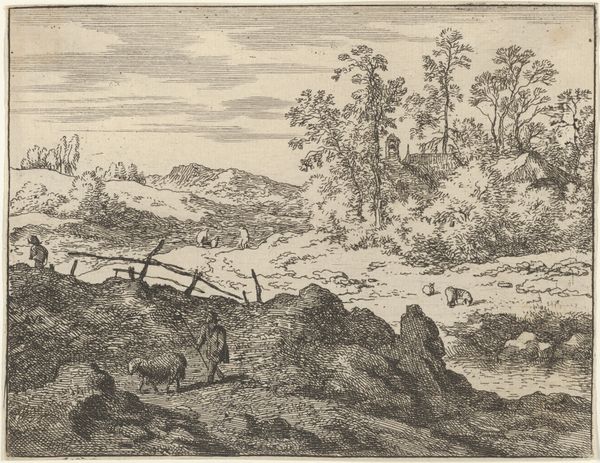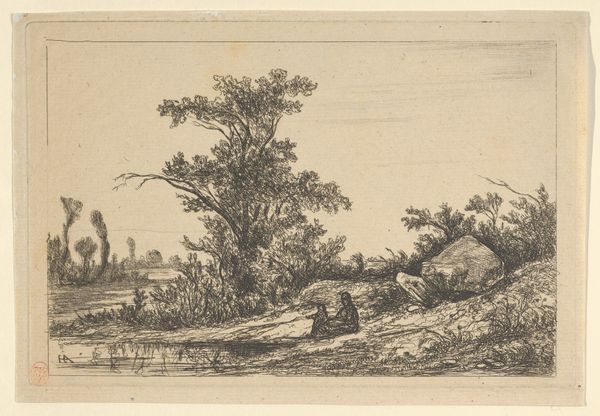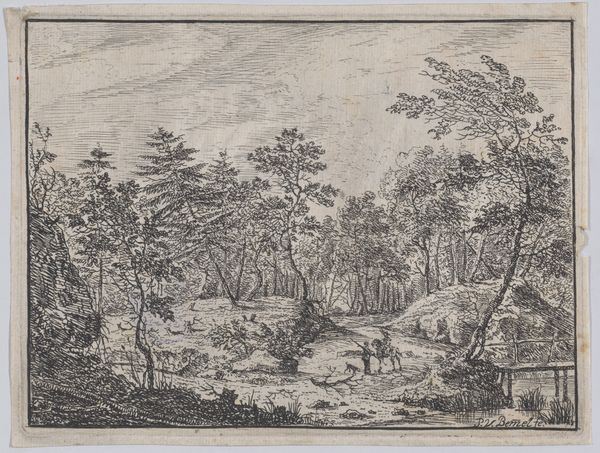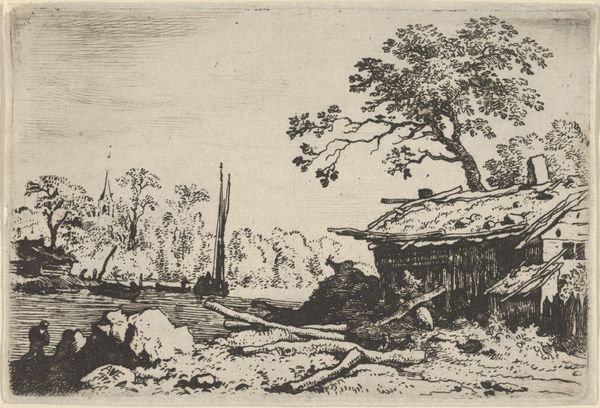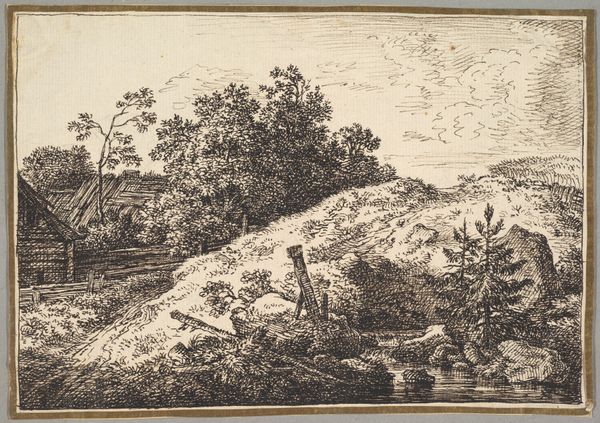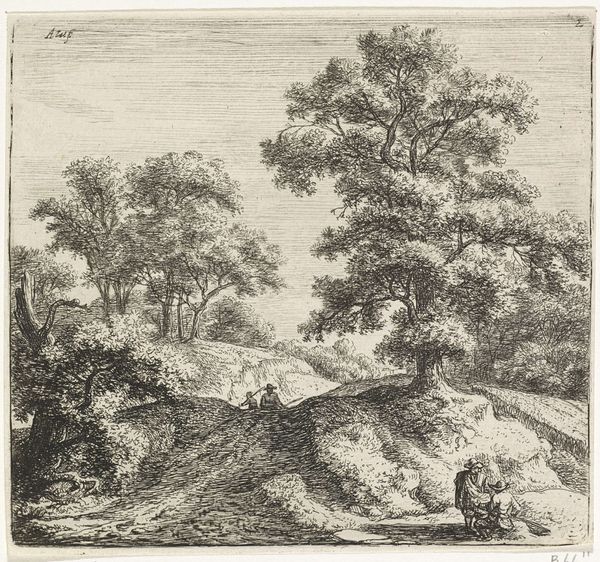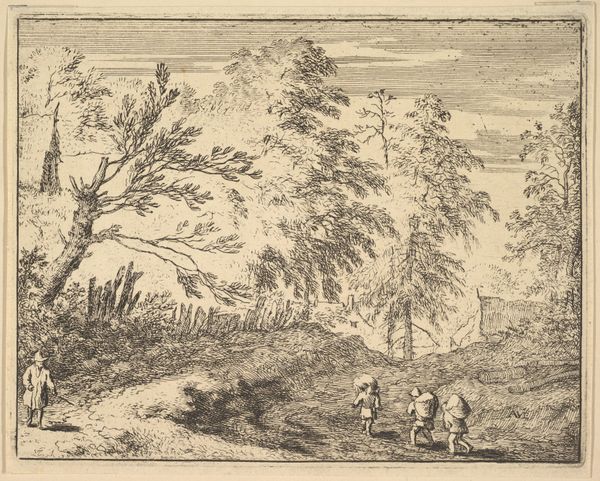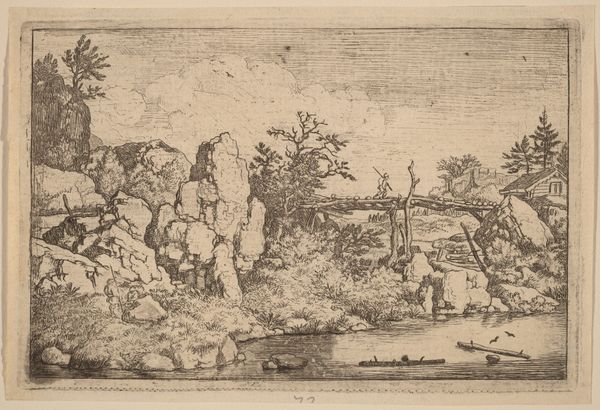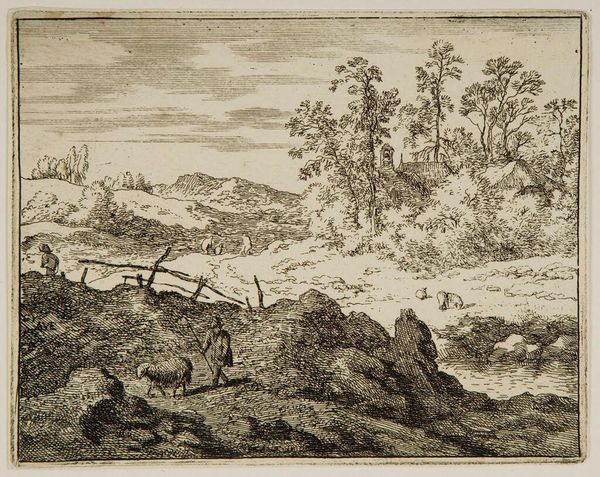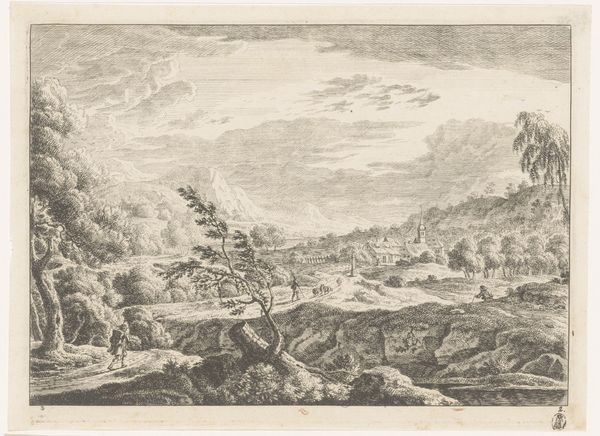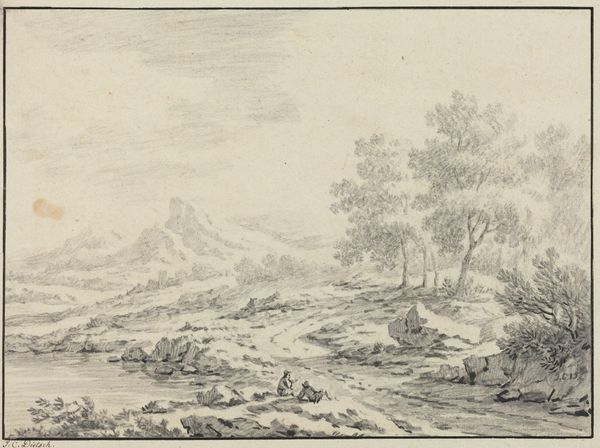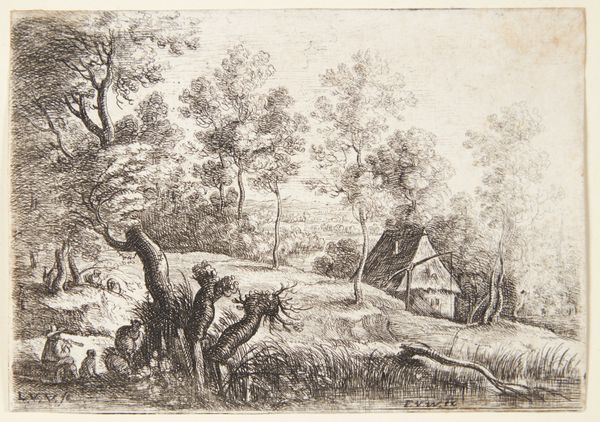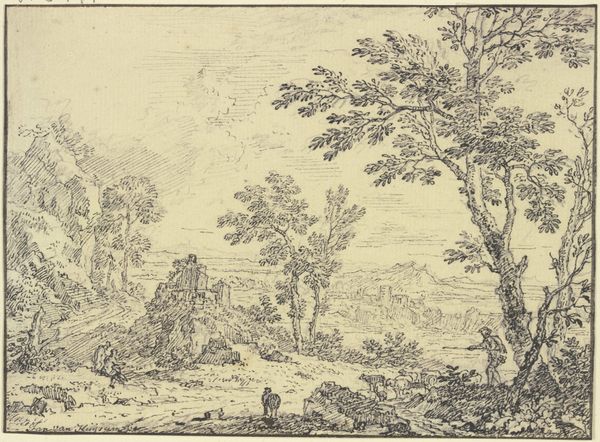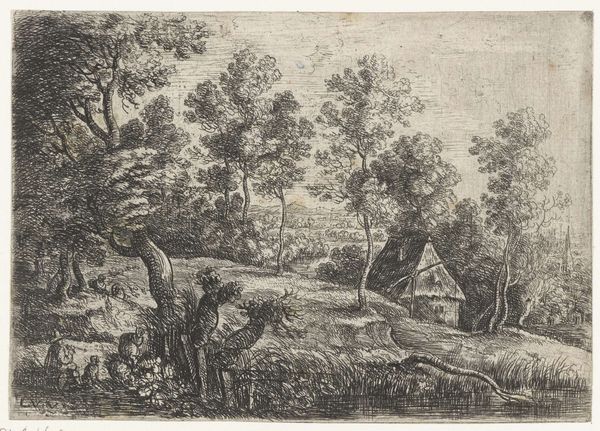
drawing, print, etching
#
drawing
#
dutch-golden-age
# print
#
etching
#
landscape
Dimensions: Sheet: 5 3/16 × 6 9/16 in. (13.2 × 16.7 cm)
Copyright: Public Domain
Allart van Everdingen created "The Shepherd and the Lamb" using etching, a printmaking technique that democratized image production. The process begins with a metal plate, usually copper, coated with a waxy ground. The artist then draws through this ground with a needle, exposing the metal. When the plate is immersed in acid, the exposed lines are bitten, creating grooves. Ink is applied to the plate, filling these grooves, and the surface is wiped clean. Finally, paper is pressed against the plate, transferring the ink and creating the print. Look closely, and you can see how Everdingen used different densities of lines to create light and shadow. The etched line has a unique character, a kind of controlled roughness, quite distinct from a drawn line. The beauty of etching lies in its reproducibility; many impressions can be pulled from a single plate. This made images like "The Shepherd and the Lamb" accessible to a broad audience, influencing popular taste and understanding of pastoral life. It blurs the boundaries between art, craft, and industry, and is a testament to the power of accessible image-making.
Comments
No comments
Be the first to comment and join the conversation on the ultimate creative platform.
